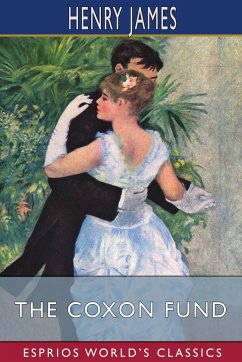Nicht lieferbar

The Sacred Fount (Esprios Classics)
Versandkostenfrei!
Nicht lieferbar
The Sacred Fount is a novel by Henry James, first published in 1901. This strange, often baffling book concerns an unnamed narrator who attempts to discover the truth about the love lives of his fellow guests at a weekend party in the English countryside. He spurns the "detective and keyhole" methods as ignoble, and instead tries to decipher these relationships purely from the behavior and appearance of each guest. He expends huge resources of energy and ingenuity on his theories, much to the bemusement of some people at the party.












